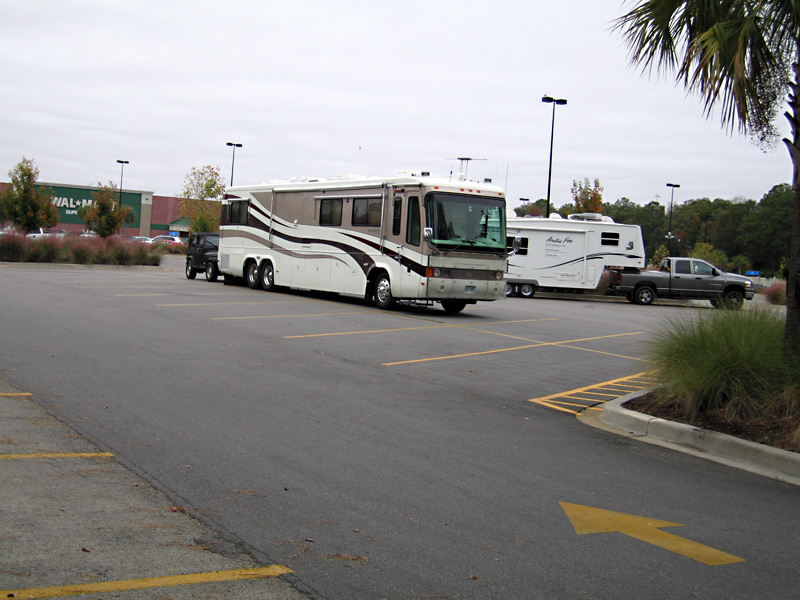 We’re always on the lookout for remote off-the-grid state and national parks where we can boondock, but have had a hard time finding any since we left Wisconsin’s tornado country.
We’re always on the lookout for remote off-the-grid state and national parks where we can boondock, but have had a hard time finding any since we left Wisconsin’s tornado country.
It seems like there was never a problem finding cool places to boondock out West. We often went without hookups in California, Utah and Colorado. But even here in the middle of the Okefenokee Swamp we have water, power, paved roads and a few neighbors.
We were able to dry camp for about a week in Blackwoods State Park in Maine when checking out Bar Harbor, but that campground was so developed it had heated restrooms and paved roads for all the huge rigs that stayed there.
Now long showers and lots of lights at night are nice, but I’d much rather go without hookups once in a while in exchange for some serious peace and quiet.
Case in point … Just as I wrote that right now, a hoard of loud kids walked by raising a ruckus!
It seems the only places where one can dry camp East of the Mississipi is in Walmart parking lots and truck stops. What’s up with that?
As Chris says, most USFS lands allow dispersed camping as long as you aren’t in the road or blocking a gate. We’ve had excellent luck in Nantahalla, Pisgah and Cherokee forests. Also, pretty much every WMA in Virginia allows 14 day stays. We’re still new to this, but we’ve found that persistence pays off.
One of the biggest problems might be the size of your rig. We’ve found that if you’re willing to follow a forest service road through enough hairpin turns and steep inclines, you’ll usually find something, even if it’s an ugly little pull off where someone has backhoe’d an old logging road to close it permanently.
Our current campsite had us in 1st gear, 4×4 low and still riding the brakes down much of the mountain. We had to ford a small creek and the gravel was large enough to bounce the wheels side to side. The site we’re at is only large enough for a Class C or a truck camper. There is one nearby that could house a moderate sized 5’er, but you’d probably be pulling branches off the roof after getting to it and some of the switchbacks might give you ulcers,
Apparently someone was in here recently with a Class C pulling a horse trailer, but that’s braver than I’d be if I’d never seen the road before. Maybe still braver than I’d be after driving it once.
To see a map showing where the federal lands are in the country:
http://nationalatlas.gov/printable/images/pdf/fedlands/fedlands3.pdf
(The home site also has more detailed information, by state.)
Note that most of the USFS and BLM land is in the West and Rockies, where it takes up the majority of the space. There is a scattering of USFS land in the South and Appalachians, but not much else in the East. (It’s probably better not to try to boondock on Indian land, unless you have specific permission. Over the past several years, Indians have become very protective of their land.)
Some of the Forest Service and BLM land is still “wide open” to boondocking, and you can camp almost anywhere. However, starting in the late 60s, the government has been increasingly posting closed, or blocking off, many of the boondocking sites. The situation varies between different national forest and ranger districts. Some are fairly sympathetic to boondocking, while others have closed down every available site. Often local private campground owners exert pressure to close down the sites to eliminate “competition”. Generally, the further away from major population centers, the better the chance a camper might be able to find boondocking sites still open on public land.
The USFS’s new “Travel Management Rule”, while primarily aimed at restricting off-road vehicles to “approved” roads; will also have the effect of further limiting sites where we can boondock.
Interesting,
Seems like there is plenty of nothing between here and there in the south so I assumed there would be lots of places to “boondock” across the south.
Oh well, Just one more good reason for y’all to head back west 😉
//A